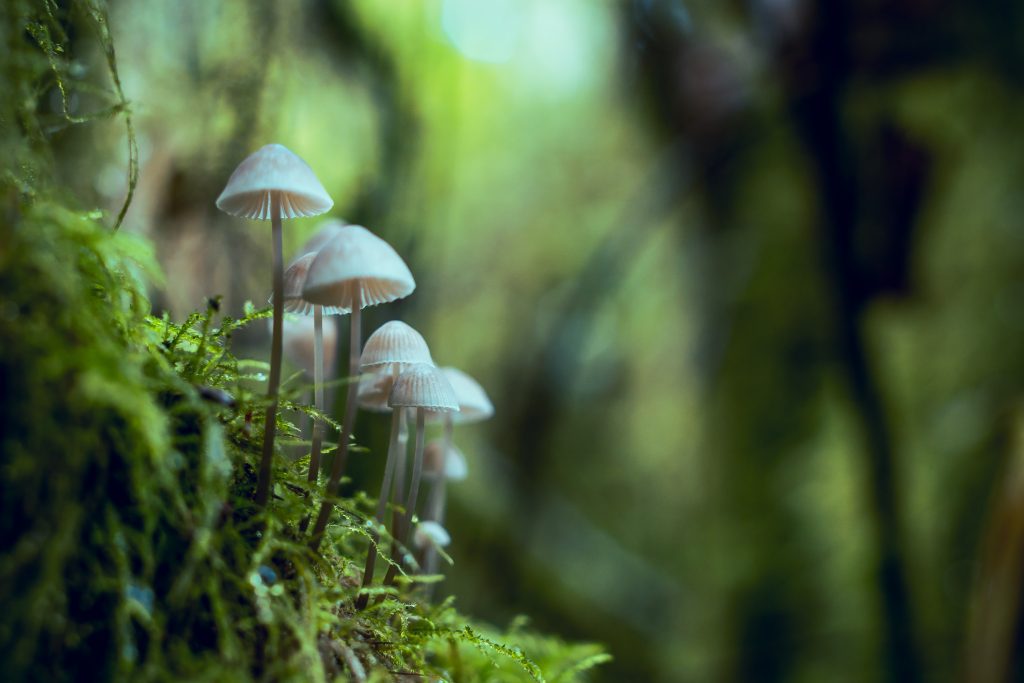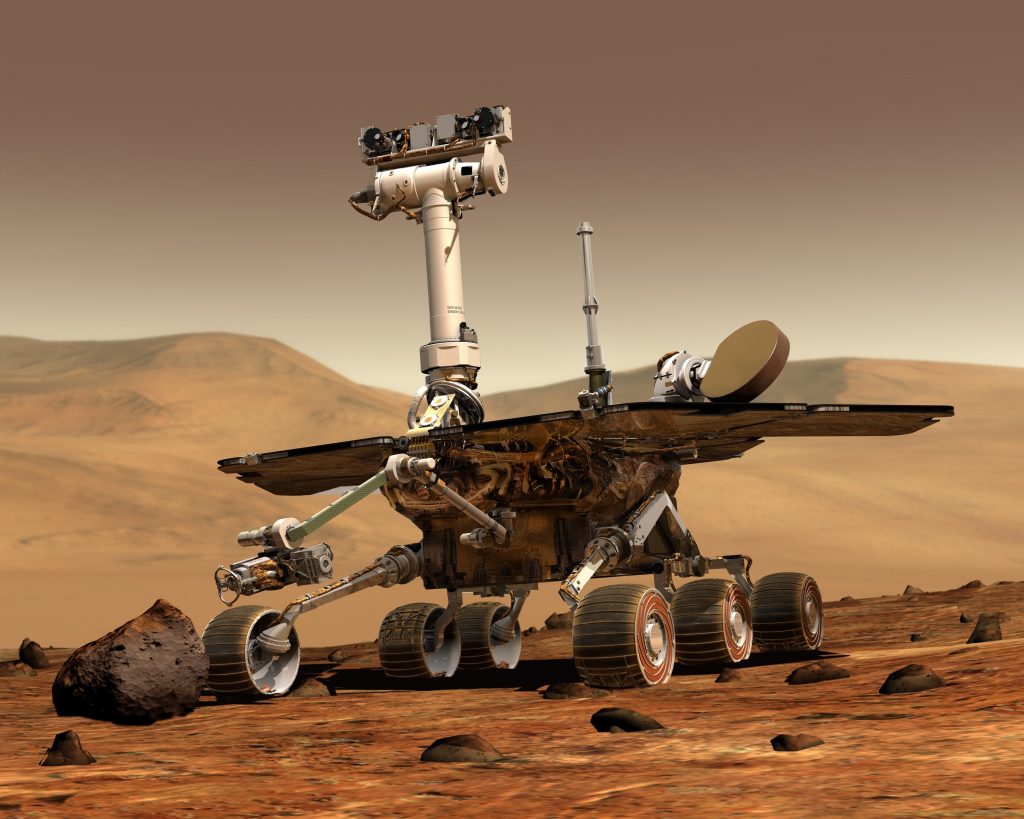Imagine you come home from work or school, unlock your front door, and step inside a giant mushroom. Just like the tiny mushrooms you see strolling through the woods, except this one towers high above you, providing shelter and warmth. A living, growing house. Much like tending to a garden of flowers, you must ensure your mushroom has water and nutrients to survive, lest you find your fungus walls and ceilings wilting and dying. But with a little care and attention, you’ll have your very own self-repairing home. Sounds like something out of a fairytale, right? Well, scientists at NASA may one day make this a reality, especially as we journey out into the cosmos to explore new planets.
Fungi possess structures called mycelia – these are root-like and consist of masses of threads interwoven among each other like a complex tapestry. The overlapping mycelia threads give high structural integrity, allowing them to be formed into sturdy constructs. So-called myco-architects have successfully grown bricks, forged functional furniture such as stools and tables, and even utilised bioluminescent mushrooms as quirky lamps. This paves the way towards creating habitats that allow us to survive the harsh conditions of extraterrestrial worlds.
Launching a rocket into space is expensive. Really expensive. And the price increases with mass. The more things we cram into our spacecraft, the heavier it gets, and the more fuel we need to achieve liftoff and escape Earth’s gravity. But this additional fuel also has mass, and therefore needs even more fuel. It’s a runaway effect that forces engineers to be exceptionally frugal with the items (and people) they launch off our pale blue dot.
When it comes to our current spacefaring abilities, NASA uses the analogy of a turtle. Like a huge shell on our backs, we transport habitats and equipment across the solar system. Whilst reliable, this is also bulky and cumbersome. If we could shed at least some of our “shell”, then we’re one small step closer to the stars. And here is where mushrooms come into the equation.
We set our sights on our planetary neighbour, Mars. With just a single fungal spore we’d have the capabilities to grow our very own Martian base, giving astronauts a place to call home in the harsh environment of the red planet. Of course, like all living things, this mushroom requires two key elements – food and water.
Water is an easy one – the Martian Reconnaissance Orbiter used heat-sensitive instruments to locate frozen water near the surface of Mars. In fact, the paper making this discovery states that at the Martian equator, water is so close to the planet’s surface “you could use a shovel” to dig it up. Nowadays, advanced water reclaiming technology can ensure almost all the water astronauts use is recycled, ready to be used again. Much like the water cycle on Earth, we can create a self-contained environment to minimise loss of water.
Now for the food we introduce cyanobacteria. Commonly known as blue-green algae, they can be found blooming in bodies of freshwater, often unwanted and disliked for discolouring the water and spoiling the view. But these cyanobacteria are perfect for our task at hand – they are experts at photosynthesising. Mars only receives around half the sunlight the Earth does, owing to it being further away from the sun. This, however, is more than enough for our algae to harness the sun’s light energy, and use it to convert water (which we already have) and carbon dioxide (which we exhale with every breath) into oxygen and glucose.
Here, we have elegantly solved two major problems. Firstly, the glucose can function as mushroom food, allowing us to grow our new Martian house. And secondly, we convert oxygen to carbon dioxide as we breathe, and the algae converts carbon dioxide back into oxygen as it photosynthesises. The two processes compliment each other, keeping our habitat in equilibrium.
The final hurdle – how do we actually construct this mushroom habitat? The leading design is a three-layered dome, much like an extraterrestrial igloo. The outer layer consists of an ice shell, easily obtained from Martian ice reserves. Water and ice act as very good barriers against radiation, to the extent that large pools of water are used in nuclear reactors to cool down the radioactive fuel sources and shield workers against harm. In the same way, our dome’s ice shell protects astronauts within from harmful high-energy cosmic rays (on Earth, this job is very kindly done for us by the Earth’s magnetic field and is the reason we see the auroras at the North and South Pole).
This outer ice trickles down to the middle layer, where our cyanobacteria await. They absorb the meltwater and photosynthesise using the sunlight which penetrates through the transparent ice. The glucose produced by photosynthesis feeds the mycelia, allowing our third and final layer – the mushroom layer – to grow into place, providing structural integrity. Once grown, we can heat the mycelia, setting it in place and preventing further growth. If we ever need to do home repairs, we simply take some of the leftover fungal spores and regrow the damages.
And there we have it – a fully functional Martian habitat grown out of mushrooms! But it doesn’t just stop there. Fungi can form soil by physically breaking down carbon-rich material such as wood and rocks. This is one of the primary processes in soil formation, and is thought to have played a key role in early soil formation on Earth. We can use this property to convert asteroid material into soil to create farms wherever we find ourselves in the Universe. Fungi also possess the ability to chemically break down substances toxic to life, such as petrol, heavy metals, and detergents to name a few. This is known as mycoremediation, and has great potential for improving recycling and reducing waste both on Earth and further beyond.
The incredible potential of this technology challenges us to reimagine the limits of our fungal friends. And who knows, maybe in the future we’ll all be living in our own mushroom mansions…
Credits to NASA for providing information about research projects explored in this article.
Featured Image: Visually Us on Pexels
Martian Rover Image: Pixabay on Pexels


